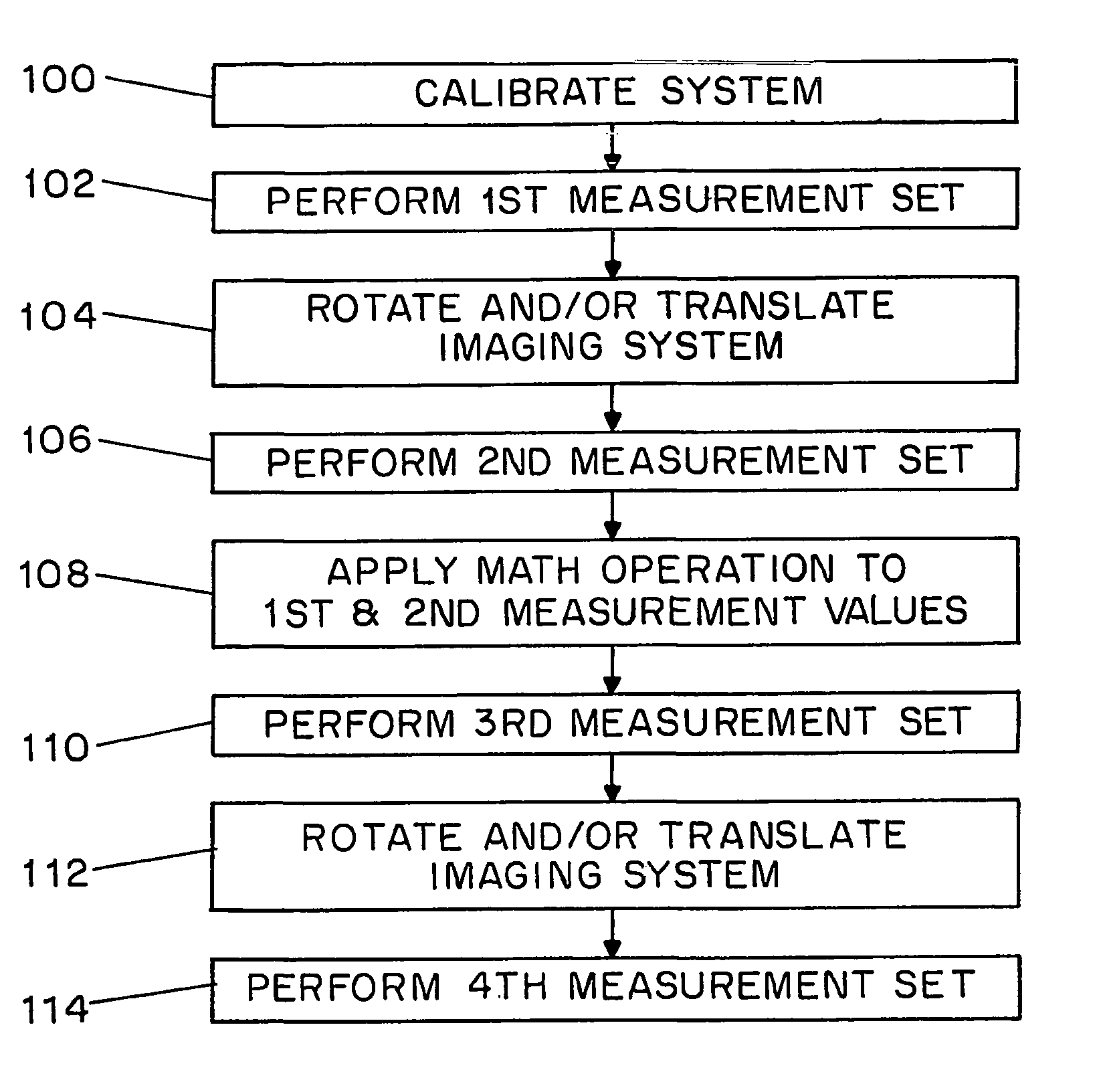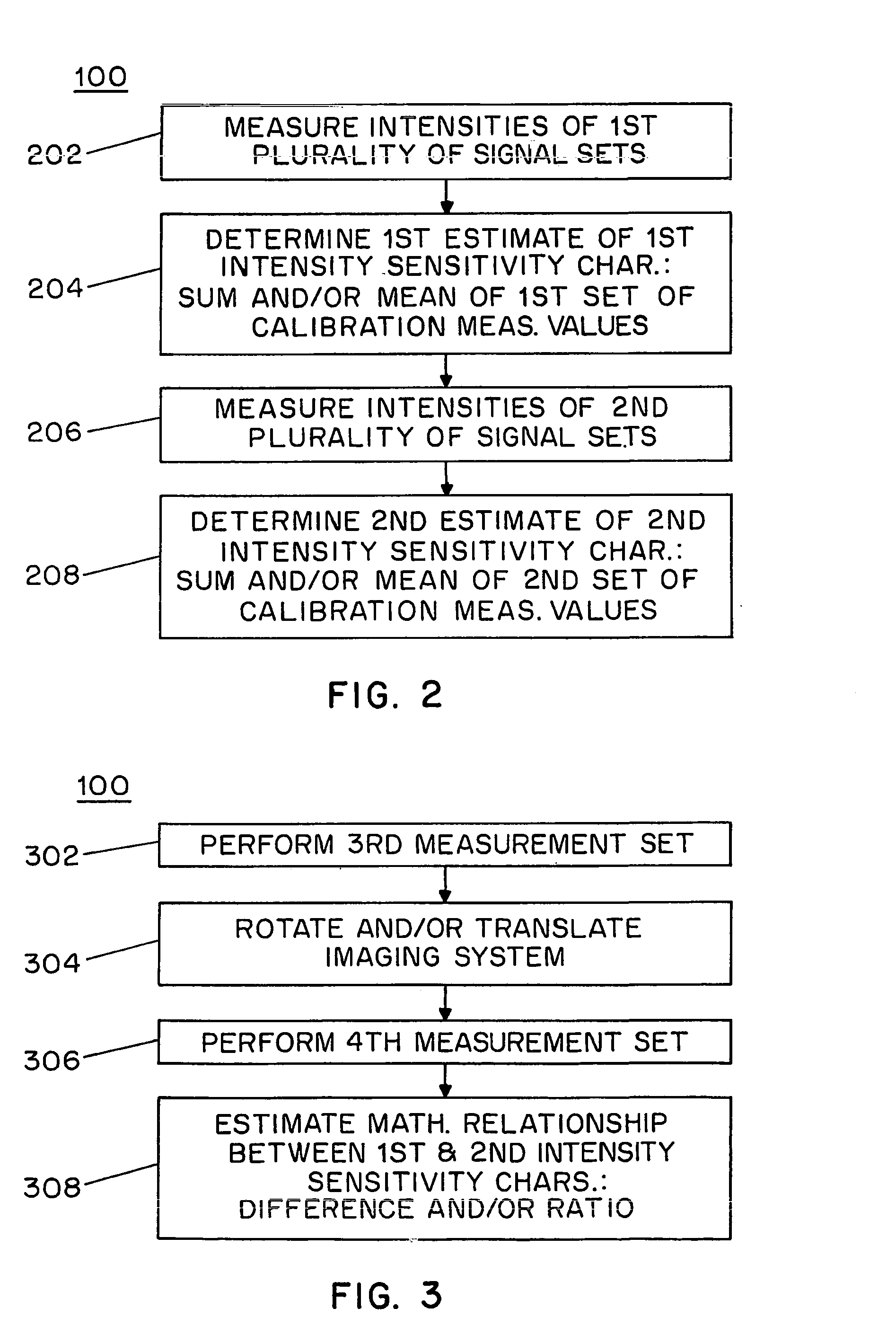Method and apparatus for image mosaicing
a technology of image mosaicing and apparatus, applied in the field of image mosaicing, can solve the problems of limited dynamic range, limited field of view, limited image mosaicing system, etc., and achieve the effect of enhancing brightness dynamic range and enlarged field of view
- Summary
- Abstract
- Description
- Claims
- Application Information
AI Technical Summary
Benefits of technology
Problems solved by technology
Method used
Image
Examples
Embodiment Construction
[0078]In accordance with the present invention, an imager—which can include an electronic still-image camera or a moving-image camera such as a video camera—can be configured such that one or more of the imager's detection characteristics varies across the vertical and / or horizontal viewing angle. For example, the left side of the field of view of the imager can be configured to have characteristics which differ from those of the right side of the field of view, or the top portion of the field of view can be configured to have characteristics which differ from those of the bottom portion of the field of view. The non-uniform (i.e., spatially varying) sensitivity characteristics of the imager can include, for example, sensitivity to scene brightness, sensitivity to light having a particular color, sensitivity to light having a particular polarization angle, and / or focal distance (i.e., the distance at which objects are in focus). By rotating an / or translating the imager between succe...
PUM
 Login to View More
Login to View More Abstract
Description
Claims
Application Information
 Login to View More
Login to View More - R&D
- Intellectual Property
- Life Sciences
- Materials
- Tech Scout
- Unparalleled Data Quality
- Higher Quality Content
- 60% Fewer Hallucinations
Browse by: Latest US Patents, China's latest patents, Technical Efficacy Thesaurus, Application Domain, Technology Topic, Popular Technical Reports.
© 2025 PatSnap. All rights reserved.Legal|Privacy policy|Modern Slavery Act Transparency Statement|Sitemap|About US| Contact US: help@patsnap.com



